There are many accidents and injuries happening around us on a daily basis. While watching the news the other day, I learned that a 12-year-old child saved an elderly man’s life by doing cardiopulmonary resuscitation (CPR). As a person who is interested in life-saving techniques, I thought it would be great to learn how to perform life-saving actions when accidents happen unexpectedly.
While searching for an emergency rescue program, I came across something called “EFR.” Emergency First Response Secondary Care (first aid) teaches what people can do for patients in case an ambulance is not available immediately. When I signed up for the program, I did not think much of it. I thought all I have to do is take care of the patient and ask other people to call 911. However, I was soon proven wrong.
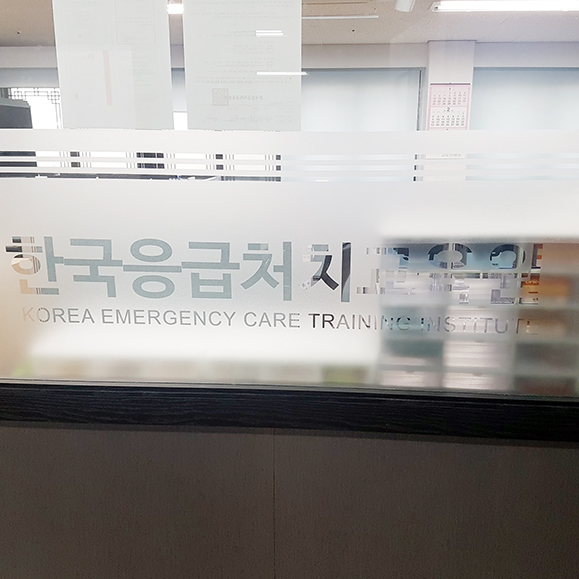
Prior to EFR, I watched an amazing video in which complete strangers cooperated, quickly dividing up their roles, to save the life of a teen who had just passed out while riding a motorcycle. People next to the victim exactly knew what safety measures they had to take, and they were able to safely deliver him quickly to emergency room. The victim’s parents were crying, and I saw how grateful they were to the people who had saved their son’s life.
On the day of EFR, I entered a room of about 11 people. There were models of bodies and automated external defibrillators (AED). I was very nervous because it was my first time seeing such things. The lecturer informed the participants with the unfortunate reality that it is only very few, one out of nine, who are actually aware of how to conduct CPR or other emergency measures. He said that as I learn how to conduct those emergency measures, I will be part of those few people, which made me very excited.
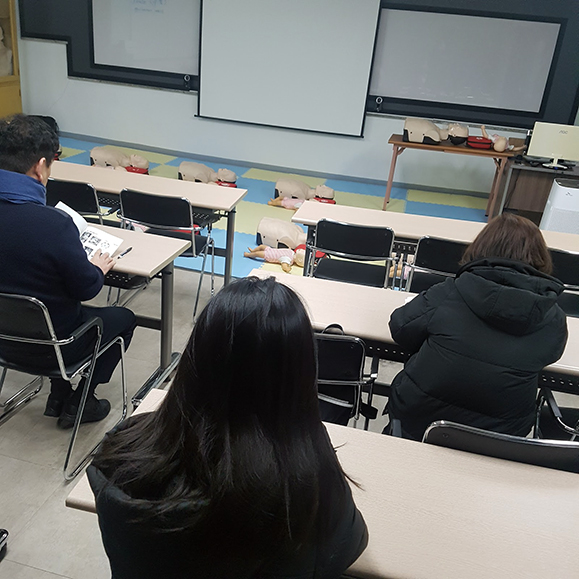
During the lecture, I learned how to use the AED and how to perform many different actions in case of an emergency. The mechanism of the AED, an emergency tool that stabilizes the patient’s heartbeat, was simple. First, I had to attach two pads on patient’s chest. Then, the AED would analyze whether the patient would need an electric shock. If the patient needs an electric shock, it gives a shock depending on the patient’s heartbeat. After learning about how to use the AED, I learned many different ways to treat patients according to their injuries. It was difficult to memorize how to treat each case, but I persevered, knowing the fact that I could rescue someone’s life.
In addition, the lecturer presented some background information about EFR that further convinced me of the program’s value. I learned that the EFR is an official global organization that has its headquarters in the United States, with PADI being the organization that conducts the program. While PADI used to be a mandatory course for divers, the organization is now accessible for everyone, and it contains many other certificate courses that focus on primary and secondary care. I was told that participants enrolled in this course will receive a global license for 183 countries upon completion. He added that almost 100 people participate in this program annually, but participants are mostly adults because EFR is now mandatory for job-seekers.
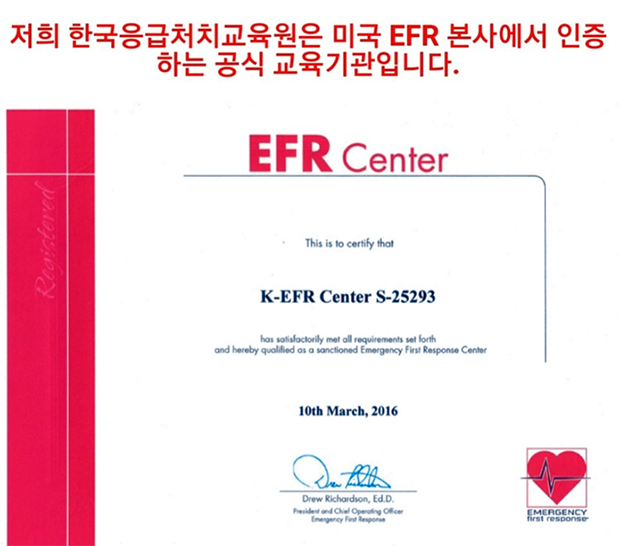
After the lecture, it was time for an actual practice. I walked up to a model and performed CPR. Even though CPR seemed easy on the outside, it was a very difficult process. I had to continuously add pressures to the patient’s body following a specific rhythm. I then opened an AED, and attached two pads (which is easy to follow because the AED had voice guidelines). I thought it was easy enough that anyone can use an AED even without prior knowledge.
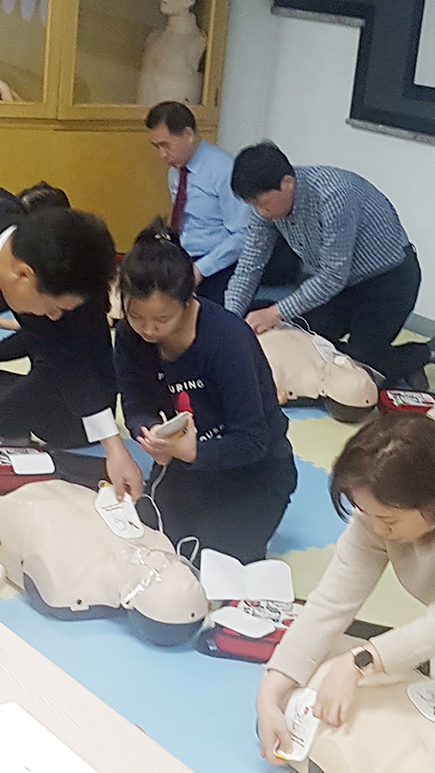
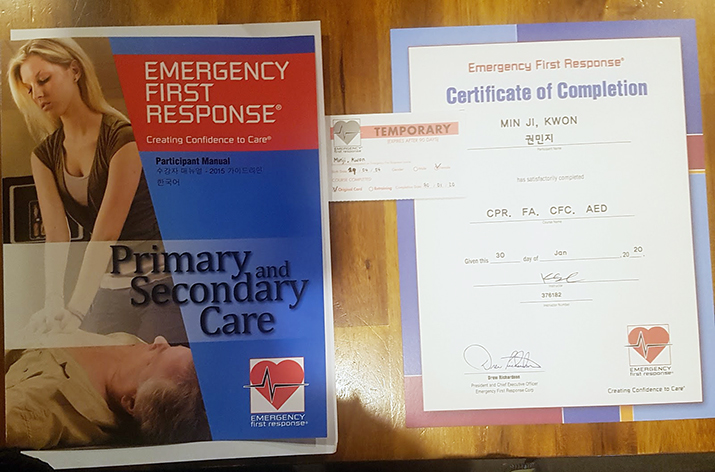
The certificate was provided at the end of the class. I was given two pieces of paper: a certificate of completion and a temporary EFR license. I am glad that I am finally able to rescue people in need and can still remember my teacher saying, “Don’t be afraid, go ahead and do what you learned. If you are afraid, everyone else is, and the patient is going to die.”
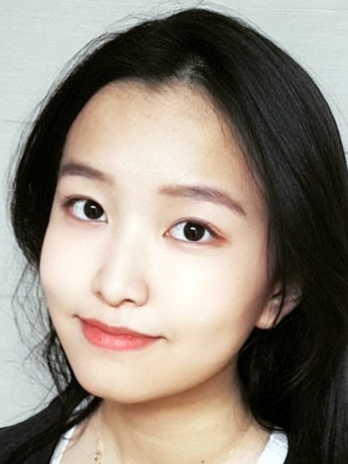
Minji Kwon
Sophomore (Grade 10)
Seoul Scholars International

